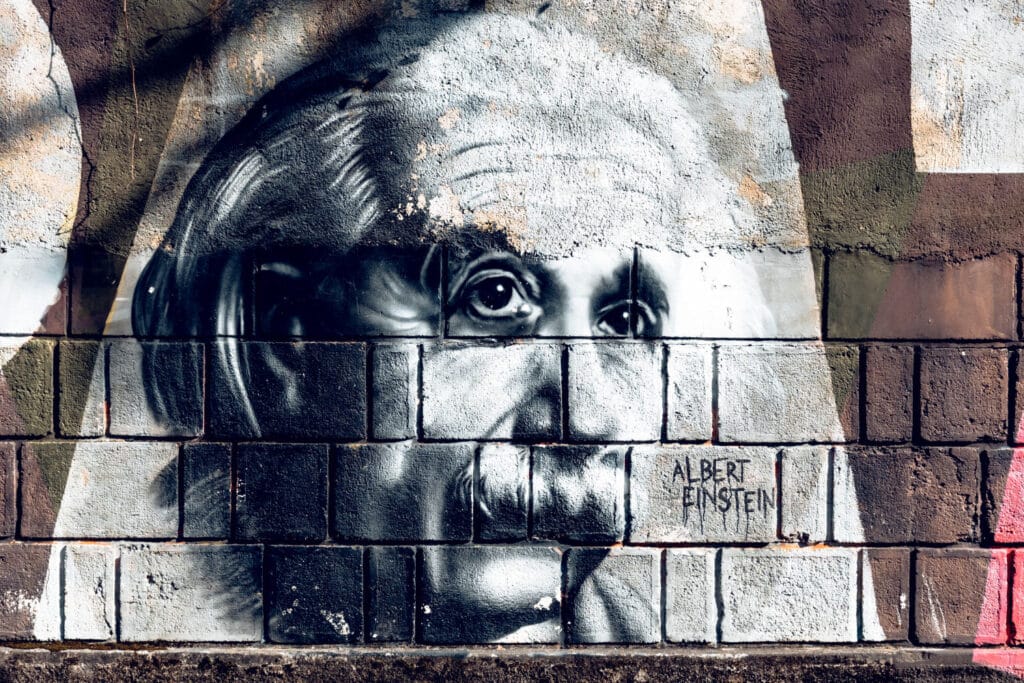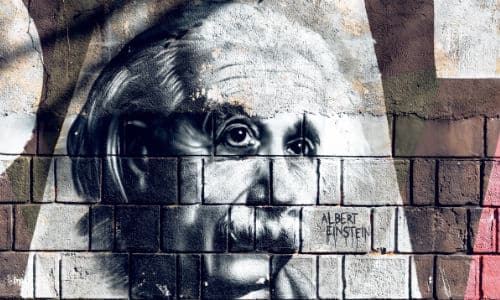
One of the biggest misconceptions surrounding Autism Spectrum Disorder (ASD) is people who live with the condition are in some way less than neurotypical people – disabled.
The mainstream perception is that autistic people aren’t capable of making valuable contributions to society, much less create great change in the world.
But that’s just simply not the case.
The world is full of famous autistic people who have had a huge impact in their chosen fields. Whether it be advocates, business men and women, leaders of industry, or artists from multiple different genres.
There is something about neurodivergent individuals that yields something which neurotypical people can’t quite tap into in the same way.
There is a special quality to the out-of-the-box thinking which leads to great innovation.
In fact, some of the greatest minds of previous generations have most likely been on the spectrum for autism.
There simply wasn’t the awareness of the condition in previous centuries.
It’s only now with the increasing normalisation around neurodivergence and how it functions in terms of cognitive thinking styles that we can look back on the contributions of historical figures and understand the real value and the power in neurodivergent thinking.
Profiles of Famous Autistic People Across History
Autism spectrum disorder wasn’t recognised as a formal diagnosis until well into the 20th century.
And although there have been many contributions in the field, it was Leo Kanner’s work exploring early infantile autism as a neuro developmental condition which really began the conversation.
Before Kanner’s discovery, neurodivergent tendencies that we now associate with autistic people were often misdiagnosed as childhood schizophrenia or delays in developing social and cognitive skills.
And even despite Kanner’s first published work titled “Autistic Disturbances of Affective Contact” being released in 1943, it wasn’t until 1980 that autism was included in the DSM-III.
And while historical figures, such as Albert Einstein, Emily Dickinson, and Nikola Tesla never received formal diagnosis during the lifetimes, if we take a look at their contribution to their chosen field, and the way they approach their work, there is a definite underpinning of neurodivergent traits, which characterise autism as we understand it today.
Einstein’s intense focus on physics, Dickinson’s reclusive lifestyle and poetic genius, and Tesla’s sensory sensitivities and inventive brilliance all align with characteristics of ASD.
These individuals’ contributions to science, literature, and technology demonstrate how autistic traits were driving innovation and creativity, in eras when their neurodivergence was not understood.
Albert Einstein’s Legacy
Although it is entirely speculative whether Einstein was truly autistic, much of his approach to physics does align with the tendencies which we associate with the condition today.
For example, he famously had a delayed speech development, and wasn’t able to speak fluently until the age of four, which is usually a common early indicator of autism
But more than this, when we look at Einstein’s contributions to science which include the theory of relativity, the cognition he possessed that facilitated those discoveries bear all of the hallmarks of high functioning autism.
Einstein was well-known for his ability to hyperfocus on abstract problems and visualise complex systems which was a large part of how he was able to revolutionise physics and pave the way for advancements in nuclear energy and space exploration.
This has also been corroborated by his peers such as Michael Fitzgerald, the Einsteins intense focus and preference for routine coupled with his difficulties with social interactions, awkwardness and small talk do align with what we understand as autism today.
However, if we look beyond the unconventional behaviours, and the neurodivergent thinking and what this was able to facilitate, it really is a testament to the value of unconventional wisdom and thinking styles.
Major Achievements:
- Developed the theory of relativity, fundamentally changing our understanding of space, time, and gravity.
- Formulated the equation E=mc2, which established the relationship between mass and energy. E=mc2
Awards and Recognitions:
- Awarded the Nobel Prize in Physics in 1921 for his explanation of the photoelectric effect.
Significant Projects:
- Contributed to the development of quantum theory and statistical mechanics.
Emily Dickinson’s Poetry Genius
Emily Dickinson is considered one of the most innovative poets of the 19th century.
And the flavour of neurodivergence runs incredibly strong throughout all of her creative output, as well as how she lived. In fact, it was her reclusive lifestyle and acute sensory awareness which likely sponsored her unconventional approach to language and form.
Her poetry was often characterised by the use of dashes, slant rhymes and compressed syntax, which suggests that her mind was one deeply attuned to minor detail and abstraction which is a hallmark of autistic cognition.
Dickinson’s intense focus allowed her to produce roughly 1,800 poems.
And although less than a dozen were published in her lifetime, this points to the capacity of intense hyper focus which is another hallmark of the classic autistic skill set.
It’s been suggested by scholars such as Julie Brown that her unique poetic voice, which is marked by an exploration of the sensory world and introspection, completely subversive of literary norms, was largely informed by her neurodivergence.
By breaking free of traditional poets and structure, Dickinson not only was able to redefine the boundaries of what poetry was, but also paved the way for greater modernist experimentation with literature as a whole.
Major Achievements:
- Authored nearly 1,800 poems, many of which explored themes of death, immortality, and nature with innovative use of language.
Awards and Recognitions:
- Although not widely recognised during her lifetime, Dickinson’s work has since been celebrated as foundational to American poetry.
Significant Projects:
- Her posthumously published works have influenced countless poets and literary movements.
Mozart’s Musical Brilliance
The profile of Mozart’s neurodivergence is rooted in his hyper sensitivity to sound as well as his obsessive dedication to music and composition. Some accounts of Mozart’s hypersensitivity to sound characterise it as being both a blessing and a curse.
Those who knew him well have described how loud abrasive noises could make him physically ill. However, that same acute auditory perception also enabled him to create incredibly emotionally and evocative works.
He was able to compose symphonies by processing multiple musical lines, using a skill known as polyphonic thinking which allowed him to create complex compositions like Magic Flute and Requiem.
Mozart’s use of innovative harmony and melodic development still stands as an enduring legacy in the 21st century.
The way he explored chromaticism, unexpected key changes and various structures set a new standard of composition during the classical era and has influenced artists even still today.
Queen drew from the operatic style of Mozart and the intricate arrangements that he was known for when composing Bohemian Rhapsody. And similarly, Paul McCartney of the Beatles credited Mozart as a large part of the inspiration for Elena Rigby.
Major Achievements:
- Composed over 600 works, including symphonies, operas, chamber music, and sonatas.
Awards and Recognitions:
- Widely regarded as one of the greatest composers in Western music history.
Significant Projects:
- His operas, such as The Magic Flute and Don Giovanni, remain staples in opera houses worldwide.
Modern Industry Leader’s with Autism Diagnoses
Leadership is evolving. In truth, it’s always evolving. But this evolution could be viewed more as a revolution.
In recent years, there has been an increasing number of leaders who have been willing to not only disclose their neurodivergence, but step into advocacy roles for the advantages of being able to think differently.
Leadership really is all about problem-solving at its very core.
And the greater the capacity to think outside of the box and be open to different ways of solving problems, the greater the capacity for creating a sustainable and harmonious culture in the workplace.
Or, within any structural dynamic of relating and creating for that matter.
And so, what’s taking place right now is an increasing acceptance of neurodiversity in leadership roles, encouraging the gifts and talents of those people who society has been trying to fit in a box for so long.
And instead of trying to label people or brand people, taking a person sensitive approach in nurturing the unique skills and talents of all individuals.
Temple Grandin’s Advocacy in Agriculture and Autism Awareness
Dr. Temple Grandin is both a scientist and advocate for autism.
One of her greatest contributions as a scientist has been in transforming the livestock Industry, through the introduction of new, more humane, systems for handling livestock.
A large part of her contribution is down to her unique visual thinking style that enabled her to create the systems, which she put in place across over half of the castle facilities in North America.
Not only did her proposals lead to an improvement in welfare, they also improved efficiency and production for plant workers.
In addition to her contributions in the field of animal science, Grandin has also been a vocal advocate for the beauty and strength found in neurodiverse individuals.
She’s known for actively campaigning and encouraging society to recognise the strength of “different kinds of minds,” which are not only beneficial for innovation and progress within various industries, but actually essential.
Grandin’s legacy is one of encouraging us to value diverse perspectives, and fostering environments where true creativity thrives.
As a professor at Colorado State University, she educates future leaders on livestock behaviour and facility design. Whilst her books and public speaking, aim to inspire new ways of creation and thinking about the world.
Major Achievements:
- Revolutionised livestock handling systems to improve animal welfare and efficiency.
Awards and Recognitions:
- Inducted into the American Academy of Arts and Sciences in 2016.
Significant Projects:
- Developed an objective scoring system for assessing animal welfare in meat plants.
Elon Musk’s Technological Innovations
Elon Musk requires very little introduction as the visionary CEO of Tesla and SpaceX.
It had been speculated for several years that he might be autistic given his awkward speaking style in interviews.
But in 2021, Musk publicly revealed his Asperger’s diagnosis and how his neurodivergence has actually helped influence his approach to innovation and problem-solving.
Musk directly credits his unique way of thinking, which is characterised by hyper focus and unconventional approaches for a large part of his success in many of his companies.
His ability to think outside of the box has allowed him to prove the viability of high performing electric vehicles with the success of the Tesla model S and model 3.
Each of these new standards in the industry for sustainability and semi autonomous driving.
Not only this, Musk has also gone on to create multiple innovative companies such as Neuralink and Starlink, each with their own unique aims and vision.
The overwhelming success of Musk and his openness about his Asperger’s diagnosis has gone a long way to help normalise the conversation about neurodiversity with leadership and technological innovation.
With Musk being one of the most successful engineers and businessmen alive, it really does highlight how autistic traits such as hyper focus, systems thinking, and resilience can actually be harnessed for the power of good.
Major Achievements:
- Founded SpaceX and Tesla, leading innovations in space exploration and electric vehicles.
Awards and Recognitions:
Significant Projects:
- Developed the Falcon rocket series at SpaceX and advanced autonomous driving technology at Tesla.
Dr. Vernon Smith’s Experimental Economics
Perhaps, maybe not famous in the traditional sense.
However, Dr Vernon Smith is a renowned nobel prize winning economist known for his pioneering approach in the field of experimental economics. His research fundamentally changed the landscape of economic research and policy making.
Smith, who was diagnosed with Asperger’s syndrome later in life, attributes a large part of a success to his neurodivergent ability to think independently and challenge the status quo of conventional economic theories.
As he was able to step aside from the social pressures placed on many of his peers, he approached his own research and economic problem-solving with an open mind, fostering the innovative ideas that helped reshape our understanding of market dynamics.
One of Smith’s most groundbreaking contributions is that market efficiency does not require perfect information.
What this means in a practical sense is that based on Smith’s suggestions, controlled experiments, like those in natural sciences, are actually possible in an economic setting.
His use of laboratory experiments proved that markets could reach equilibrium even when participants lacked complete information, which challenged traditional economic models and assumptions.
Another of Smith’s key contributions was the development of “induced-value method,“ which has since become a new standard in experimental economics.
This allowed researchers to create controlled environments where they could test new policies before they were implemented in the real world.
An example of this is Smith’s work on auction systems which influence how the governments could allocate resources, such as electromagnetic spectrum licenses and landing slots.
Major Achievements:
- Pioneered the field of experimental economics, using laboratory experiments to test economic theories.
Awards and Recognitions:
- Awarded the Nobel Prize in Economic Sciences in 2002 for his work on experimental economics.
Significant Projects:
- Developed the “induced-value method” for economic experiments.

















